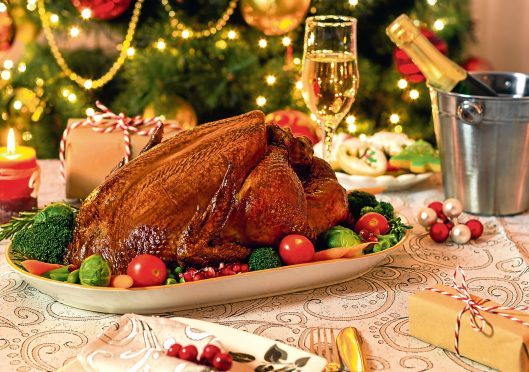We have King Edward VIII to thank for making it a tradition to eat turkey at Christmas, although it’s said Henry VIII also enjoyed tucking into them before then.
Over the years, the trend for eating turkey rather than goose on Christmas Day slowly caught on but it wasn’t until the 1950s that turkey became more affordable and accessible to all. In the 1930s, for example it still cost nearly a week’s wage to buy a turkey whereas now, you can get a fantastic bird for less than two hours of the average wage.
Today there are 43 different breeds of turkey with the most common in the UK being standard white, bronze and Norfolk black breeds with around 10million eaten in the UK every Christmas.
For more Christmas news and competitions, visit www.besteverchristmas.co.uk
Buying fresh is always the best option – visit your local farmer and butcher to order one now. When you get it home, it must be stored in a fridge at a temperature of no more than 4C.
If your turkey is frozen and needs to be defrosted, this can be done as follows:
- Fridge (up to 4C) – allow eight to 12 hours per kg
- Cool room (10-15C) – allow three to four hours per kg
- Room temperature (20C) – allow two hours per kg
After thawing remove all packaging, take out giblets and store separately. Store lightly covered on a deep plate or dish (to prevent any of the juices dripping onto other foods in the fridge) towards the base of the fridge. Ensure the fridge is at a temperature of no more than 4C).
Once thawed and in the fridge, the turkey will keep for two days, while cooked turkeys should be kept in the fridge for no longer than four days. If freezing cooked turkey, remove from the carcase first and freeze separately. The meat will remain moist and succulent if frozen either in stock or gravy.
THE GREAT COOK OFF
One of the biggest worries for those preparing Christmas dinner is knowing when to start cooking. As a guide, if the bird is under 4kg allow 20 minutes per kg + 70 minutes. If the bird is over 4kg allow 20 minutes per kg + 90 minutes.
Weigh the turkey after stuffing to calculate cooking time and remember oven temperatures vary. Fan assisted ovens cook at a higher temperature – consult the manufacturer’s handbook. Cook in a conventional oven at 190°C (Fan 180°C) / 375°F / Gas Mark 5. Cover loosely with foil and remove foil for last 40 minutes for browning.
Ensure your oven is up to temperature. Remember – on Christmas Day power may be reduced slightly due to the surge on the grid. This and regular opening and closing of the oven door (to test the bird) will also reduce the heat.
Allow the turkey to stand, covered loosely with foil, for at least 15-20 minutes before carving.
CARVING
Take your hat off to master chef, Paul Muddiman from London restaurant Simpson’s-in-the-Strand as he can carve a 25lb turkey in just five minutes! Here he takes you step by step through how he does it. It may take you a little longer, but the results should be perfect.
STEP ONE
With a sharp knife, cut the skin between leg and breast. Bend leg outwards and cut straight through the joint, removing the whole leg. Repeat on the other side. If the turkey is properly cooked, the legs will fall away easily. Do the same with each wing, leaving the breast meat intact.
STEP TWO
With the legs removed, slice horizontally at the base of the breast until your knife reaches the carcass. Do this on both sides. Then, slice downwards in neat, even slices.
STEP THREE
Slice the dark meat off the legs (hold the drumstick with a piece of kitchen paper if this makes it easier). Arrange round the edge of the serving platter. Pile the slices of white meat in the centre and carry your plate to the table and expect a round of applause!
Visit www.britishturkey.co.uk
